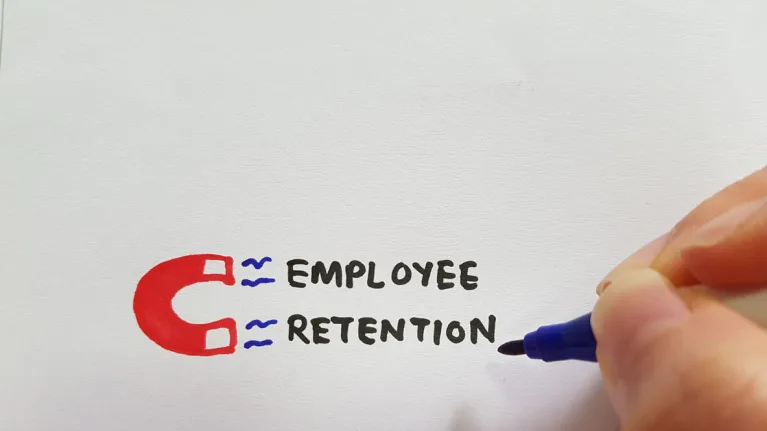DEI Initiative Examples for 2025: Workplace Trends to Adopt
 Omer Usanmaz
·
5 minute read
Omer Usanmaz
·
5 minute read
Diversity, Equity, Inclusion, and Accessibility (DEIA) initiatives are now very important for organizational success. This is true in the United States, Canada, and worldwide. DEIA programs are based on equal employment laws, the Civil Rights Act of 1964, Title VII, and the Equal Employment Opportunity framework. They address workplace discrimination. They also run affirmative action programs. They promote fair environments for all employees. This includes marginalized groups, Black Americans, transgender individuals, and persons with disabilities.
Diversity and inclusion initiatives promote fairness. They also promote respect and equal opportunities. They do this in corporate America. They also do it in federal contractors, higher education, the military, and international organizations. Federal employees and grantees follow rules like Executive Order 11246, Executive Order 13985, and guidance from the Office of Management and Budget. These rules ensure they comply with civil rights protections and race-conscious policies. They include pay equity audits and skills-based hiring programs.
Recent political actions show that DEI initiatives have become a contested topic. These actions include efforts by Trump, the Florida Board of Governors, Greg Abbott, and the Stop WOKE Act. They appear in debates about Presidential or legislative actions. Research consistently shows that diversity initiatives improve work culture. They also increase employee satisfaction and boost organizational performance.
Why DEI Initiatives Drive Organizational Benefits
Organizations that focus on diversity, equity, and inclusion see clear benefits in many areas.
- Innovation and Productivity: Diverse teams enhance creative problem-solving, leverage multiple perspectives, and improve workplace diversity training outcomes. Programs like Project Lifechanger and DEI workshops support employees in developing leadership skills.
- Financial Performance: Studies, including LinkedIn surveys, show that inclusive organizations often outperform competitors, attract job seekers from underrepresented groups, and respond positively to shareholder pressure for ethical and socially responsible practices.
- Workplace Culture Change: DEIA programs foster belonging, reduce discrimination, and support international diversity. Programs include mentorship software, Neurodiversity Programs, Accessibility initiatives, and skills-based hiring.
- Legal and Ethical Compliance: Implementing DEI frameworks ensures adherence to federal anti-discrimination policies, the Age Discrimination in Employment Act, Don't Ask, Don't Tell, and other civil rights protections. Attorney General oversight and Supreme Court rulings often guide policy implementation.
- Long-Term Business Benefits: Equity Action Plans and DEI in Canada benchmarks signal commitment to business ethics and help organizations maintain a competitive edge.
According to McKinsey & Company, companies with high racial and ethnic diversity are 35% more likely to perform better financially than their peers. Investing in DEIA is both a moral obligation and a strategic business move.
Common DEI Initiatives
Organizations use several strategies. These strategies help them include DEIA principles effectively.
- Inclusion and DEIA Workshops: Train employees on unconscious bias, microaggressions, critical race theory, and cultural competency. Tools like the Implicit Association Test and consumer research insights help measure effectiveness.
- Employee Resource Groups (ERGs): Support networks and professional development for employees from diverse backgrounds, including LGBTQ+, parents, and minority-owned business networks.
- Recruitment and Hiring Practices: Employ skills-based hiring, race-conscious policies, affirmative action programs, and employment equity strategies to diversify talent pipelines. Federal employment practices and agencies like the Office of Personnel Management ensure compliance.
- Policy Changes and Accessibility Initiatives: Address pay equity, academic freedom, environmental justice, supply chain diversity, and sexual orientation inclusivity.
- Employee Engagement and Retention: Qooper Mentoring Software enable feedback collection through employee satisfaction surveys, supporting retention and promotion rates monitoring.
- Leadership Accountability: Track progress with Diversity reports and hold Chief Diversity Officers accountable for leadership development, measurable goals, and DEI compliance.
DEI Initiative Examples
Below are examples of DEI initiatives used in federal, corporate, and educational settings.
1. Inclusive Hiring Practices
- Blind Recruitment: Remove identifying details from resumes to reduce bias.
- Diverse Interview Panels: Ensure multiple perspectives in hiring decisions.
- Inclusive Job Descriptions: Highlight organizational commitment to diversity, equity, and inclusion.
2. Employee Resource Groups (ERGs)
- Support networks for employees from diverse backgrounds.
- Offer mentorship, networking, and professional development.
- Advocate for DEI policies, racial progress, and workplace inclusion.
3. Mentorship Programs
- Pair underrepresented employees with senior leaders.
- Provide career guidance, leadership development, and skills-based growth.
- Enhance diversity in leadership pipelines.
4. Equity Action Plans
- Developed in response to Executive Order 13985 and other mandates.
- Include measurable goals, pay equity audits, and race-conscious hiring programs.
5. Inclusive Benefits and Policies
- Gender-affirming healthcare, adoption assistance, and accommodations for employees with disabilities.
- Address workplace discrimination, academic freedom, and environmental justice.
6. DEI Training and Workshops
- Education on unconscious bias, microaggressions, and cultural competency.
- Leadership training for creating inclusive teams and supporting underrepresented groups.
7. Supplier Diversity Programs & Community Engagement
- Partner with minority-owned businesses and support local initiatives.
- Promote economic inclusion, multiculturalism, and strengthen community ties.
DEIA in Action: Federal and Corporate Examples
- Federal Workforce and Contractors: Office of Management and Budget, Federal grantees, and Pentagon programs enforce DEI frameworks and Equity Action Plans.
- Corporate America: Utilize mentorship software, diversity statements, and pay equity audits.
- Higher Education: Address race-based admissions, race preferences, and university admissions policies while adhering to civil rights laws.
- Military: Focus on inclusive leadership, neurodiversity, and accessibility initiatives.
- Political and Legal Contexts: Influenced by the Supreme Court, Attorney General, Stop WOKE Act, and Presidential or legislative action.

Measuring and Improving DEIA Outcomes
- Data Analysis: Track workforce demographics, retention and promotion rates, and workplace diversity.
- Employee Feedback: Use employee satisfaction surveys to gather anonymous insights on inclusion.
- Targeted Action Plans: Prioritize issues by urgency using Equity Action Plans.
- Leadership Accountability: Regular Diversity reports ensure Chief Diversity Officer and leadership buy-in.
- Continuous Improvement: Combat DEI fatigue and adapt programs to changing organizational needs.
In Summary: Common DEI Initiatives
- Inclusive Hiring Practices
- Blind recruitment, diverse interview panels, inclusive job descriptions.
- Employee Resource Groups (ERGs)
- Support networks, mentorship, advocacy for DEI policies.
- DEI Training and Education
- Workshops on bias, microaggressions, critical race theory, and cultural competency.
- Pay Equity Audits
- Analyze compensation and implement transparent pay practices.
- Flexible Work Arrangements
- Remote work, flexible hours, job-sharing.
- Accessibility Initiatives
- Modify workspaces, assistive technologies, and accommodations.
- Supplier Diversity Programs
- Partner with minority-owned businesses and promote economic inclusion.
- Community Engagement and Social Responsibility
- Volunteer programs, local partnerships, and support for marginalized communities.
Key Takeaways
- DEI Initiative Examples are essential for building inclusive, equitable, and productive workplaces.
- Inclusive Hiring Practices like blind recruitment, diverse panels, and inclusive job descriptions reduce bias and improve workforce diversity.
- Employee Resource Groups (ERGs) and mentorship programs support underrepresented employees, enhance leadership pipelines, and foster belonging.
- Equity Action Plans and pay equity audits ensure measurable progress and compliance with federal anti-discrimination policies.
- DEI Training and Workshops address unconscious bias, microaggressions, cultural competency, and critical race theory.
- Accessibility Initiatives and inclusive benefits promote participation and support for employees with disabilities, caregivers, and marginalized groups.
- Supplier Diversity Programs and community engagement strengthen economic inclusion and corporate social responsibility.
- Leadership Accountability through Diversity reports, Chief Diversity Officer oversight, and leadership development ensures DEIA goals are actionable.
- Federal and corporate frameworks like Executive Orders, Civil Rights Act of 1964, Title VII, and federal employment practices guide race-conscious hiring programs, affirmative action, and workplace equity.
- Continuous measurement through employee satisfaction surveys, retention and promotion rates, and Workplace DEI reports is key to combating DEI fatigue and adapting initiatives over time.
Conclusion
Focusing on DEI initiative examples helps organizations build workplaces that are inclusive, fair, and productive. These initiatives include mentorship programs. They include skills-based hiring. They improve accessibility. They hold leaders accountable. They encourage innovation, improve employee morale, and strengthen business ethics. DEIA is a strategic long-term investment in equity, diversity, and inclusion. Federal agencies use it. Corporate America uses it. Higher education and international groups use it too.
FAQs
1. What are DEI initiatives and why are they important?
DEI (Diversity, Equity, Inclusion) initiatives are programs designed to promote fair treatment, equal opportunities, and respect for all employees. They improve workplace culture, increase employee satisfaction, and drive organizational performance.
2. What are some common examples of DEI initiatives?
Common initiatives include inclusive hiring practices, Employee Resource Groups (ERGs), mentorship programs, equity action plans, DEI training and workshops, accessibility initiatives, inclusive benefits, supplier diversity programs, and community engagement.
3. How do inclusive hiring practices support DEI goals?
Inclusive hiring practices, such as blind recruitment, diverse interview panels, and inclusive job descriptions, reduce bias and promote workforce diversity.
4. What role do Employee Resource Groups (ERGs) play in DEI initiatives?
ERGs provide support networks for underrepresented employees, offer mentorship and professional development, and advocate for equitable workplace policies.
5. How do mentorship programs enhance DEI efforts?
Mentorship programs pair underrepresented employees with senior leaders to support career growth, leadership development, and skills-based advancement, strengthening the diversity of leadership pipelines.
6. What are Equity Action Plans and how are they implemented?
Equity Action Plans establish measurable goals, pay equity audits, and race-conscious hiring programs to ensure organizations meet legal and ethical DEI standards.
7. How do DEI training and workshops contribute to workplace inclusion?
Workshops educate employees on unconscious bias, microaggressions, cultural competency, and critical race theory, helping foster inclusive behaviors and awareness across the organization.
8. Why are accessibility initiatives and inclusive benefits important?
These initiatives accommodate employees with disabilities, caregivers, and marginalized groups, promoting participation, equity, and workplace fairness.
9. How do supplier diversity programs and community engagement support DEI?
Partnering with minority-owned businesses and supporting local initiatives strengthens economic inclusion, multiculturalism, and corporate social responsibility.
10. How can organizations measure the success of DEI initiatives?
Organizations track workforce demographics, retention and promotion rates, employee satisfaction surveys, and diversity reports to ensure progress, compliance, and continuous improvement.







